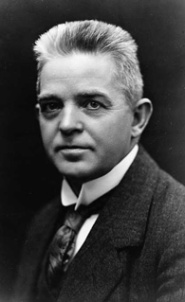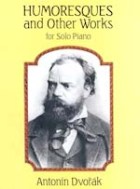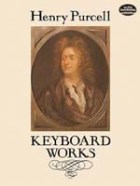Those who attended the concert will easily remember the time I performed in the dark, even though it has been more than 10 years now. I’m proud to say I haven’t felt the need to embellish the story over the years, the reality being quite enough to hold its own in the retelling.
It was a concert which included a variety of solo and ensemble works – all new or recent – and which took place in a small recital hall at Pacific Lutheran University. The hall was packed, leaving a few members of the audience standing, and unfortunately some poor unknowing soul leaned on the light switch mid-way through my performance of Carl Nielsen’s Chaconne, Op. 32. It felt like an eternity, but was likely just about a minute or so, before someone figured out the problem and got the lights back on. It was also one of the few times in my life that I was happy to be performing from memory, rather than with music! Luckily for me, the lights were back on just before I reached a section filled with wide leaps, so the performance was saved.
 I share this story only partly because I was impressed with my own composure and ability to perform well in spite of the circumstances. I share it also because it is a part of my long-term relationship with Nielsen’s often extremely challenging repertoire. My first exposure to the composer was as the child of a clarinetist, who used portions of the Nielsen’s ridiculously difficult clarinet concerto as a part of his warm-up routine. A few years down the road, as a high-school clarinetist, I feebly attempted those same sections, and also familiarized myself with Nielsen’s symphonies. Two things were abundantly clear: I loved this composer’s unique language, and he was a composer who didn’t concern himself with how difficult his writing was for the performer – he simply wrote what he wanted to write to achieve his musical aims.
I share this story only partly because I was impressed with my own composure and ability to perform well in spite of the circumstances. I share it also because it is a part of my long-term relationship with Nielsen’s often extremely challenging repertoire. My first exposure to the composer was as the child of a clarinetist, who used portions of the Nielsen’s ridiculously difficult clarinet concerto as a part of his warm-up routine. A few years down the road, as a high-school clarinetist, I feebly attempted those same sections, and also familiarized myself with Nielsen’s symphonies. Two things were abundantly clear: I loved this composer’s unique language, and he was a composer who didn’t concern himself with how difficult his writing was for the performer – he simply wrote what he wanted to write to achieve his musical aims.
And this brings me to his piano repertoire. Repertoire that is most definitely not part of the traditional piano canon, and yet, in my opinion, most definitely should be more often played. It is obviously difficult, but in my experience with it, well worth the effort. And since two of his relatively small number of major works for the piano are in the variation form which is the theme of this blog, I thought it was time to share them!
The Chaconne, Op. 32, dates from 1916, and the Theme and Variations, Op. 40, was composed the following year, placing these two works between the 4th and 5th symphonies in the composer’s output. While technically not the same form, the two works are nonetheless quite similar in style and scope: constantly developing and evolving, each variation growing organically from the previous one, stretching tonality but never leaving it, and utilizing the full technical and dynamic capabilities of the instrument.
The Chaconne is in D, primarily in minor but ending with a flourishing Coda in major. The simple eight-bar bass-line which is the basis of the work is stated on its own, starkly, and then the proceeding iterations grow out of it, proceeding one after another without break, growing in technical complexity and dynamic range. At the eleventh iteration, there is a marking of Meno, halting the growing intensity for a moment of retrospection, before the activity begins expanding once again. The fifteenth and sixteenth iterations of the chaconne line bring us to the sections filled with leaps – that place, years ago, where I’m so glad the lights came back on!
The piece concludes with a lengthy Coda, marked “Tempo I, ma tranquillo,” in the major key, in which one hand sails through a fascinating line of quiet thirty-seconds while the other maintains the bass-line with which we are, by this point, so familiar. Finally, rapid scale fragments at the top of the piano trail off into a simple chord progression to end the work. Here is a nice performance selected from the several available on YouTube:
The Theme and Variations, Op. 40, is a few steps beyond the Chaconne – in terms of length, difficulty, and developmental scope. I have worked on this piece over the past several years, but have yet to bring it to the point of polish that it would be performance-ready. Someday!
The work is solidly in B-minor, and yet that said, the theme which begins clearly in that key ends sixteen bars later in… g minor? It is this open exploration of tonality, established in the theme, which makes the work so fascinating. There are a total of 15 variations, and I’ll single out just a few before sharing a link to a recording – assuming the work can speak for itself more effectively than I can expound on it!
After a few fairly traditional variations, variation 3 is a highly-chromatic canon, the left hand following the right at a distance of one beat and one octave, pianissimo throughout, and with one giant slur over the entire variation. This variation establishes early on in the work that the composer is going to surprise us with the range of moods and styles which he was able to draw out of a relatively simple theme. Variations seven and eight give the listener a similar moment of quiet solitude between passages of virtuosity.
By far my favorite moment of the work is variation 13, in which Nielsen sets up three voices – a bass-line which is the primary melody, an arpeggiated tenor voice, and then an ostinato (marked so in the score) in the right hand – all three voices slowly building to a climax at the end of the variation. The final variation, number 15, is tremendously difficult, requiring stamina from the performer in the form of ff and fff markings lasting over three pages, rhythmic complexity, multiple voices, etc.
This exciting drama finally stumbles to a stop in a passage marked come ubbriaco. First time I’ve seen that marking, how about anyone else? Essentially, according to the rough translation by my trusty pocket-sized Italian-English dictionary, it means to play the passage as if drunk. And given how difficult the previous passage is, it’s not too difficult to summon that type of feeling! Anyway, as promised, I will stop there, and share this recording for your listening pleasure. I hope I’ve inspired at least one person to even a portion of the fascination I have for Nielsen’s works.




 In spite of my voracious reading habit, my many years of lessons, and multiple piano repertoire courses, I must confess that I was not familiar with Haydn’s handful of variation sets for solo piano. Fortunately, this was remedied in one sitting with a lovely Dover publication – “Variations, Dances, and other Shorter Works for Solo Piano”.
In spite of my voracious reading habit, my many years of lessons, and multiple piano repertoire courses, I must confess that I was not familiar with Haydn’s handful of variation sets for solo piano. Fortunately, this was remedied in one sitting with a lovely Dover publication – “Variations, Dances, and other Shorter Works for Solo Piano”.